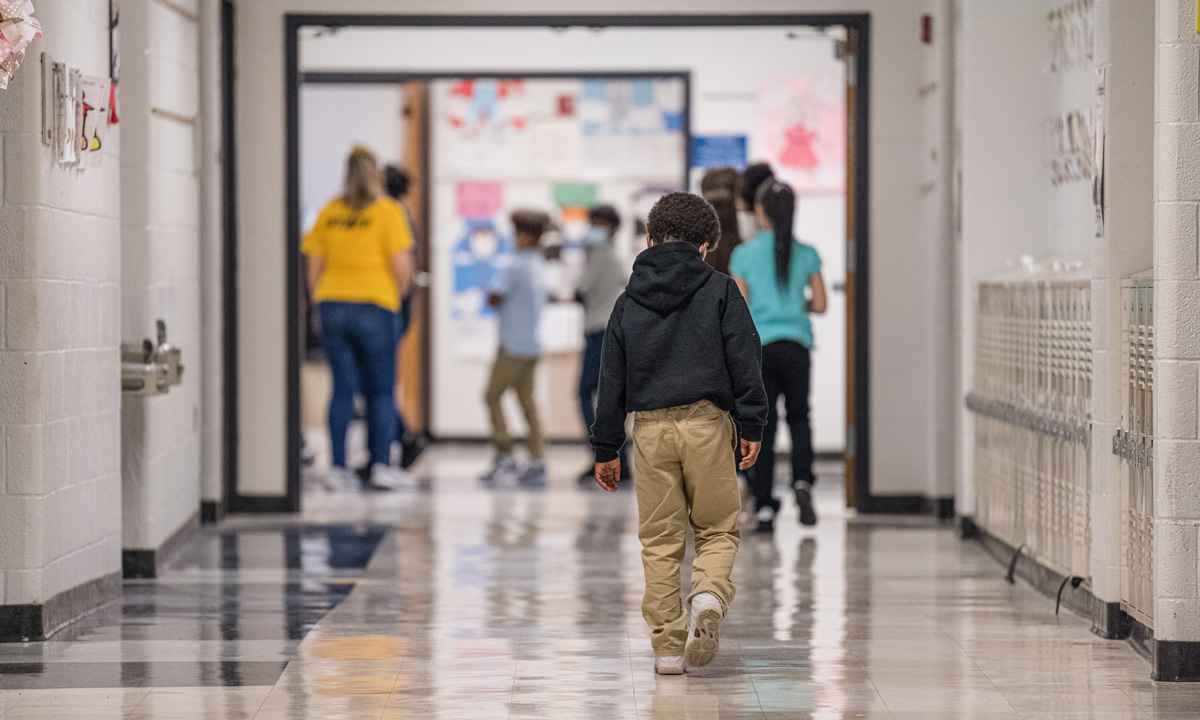Report: ‘A Mixed Picture’ in Pandemic Recovery for American Children
Students of color continue to fare worse than national average in several well-being indicators, according to the Annie E. Casey Foundation.

Get stories like this delivered straight to your inbox. Sign up for The 74 Newsletter
American children and teens continue to be plagued by ongoing effects of the pandemic — and most students of color are bearing the brunt of worsening or stagnant indicators, a new report shows.
The annual Kids Count report, released last month from the Annie E. Casey Foundation, found that while there’s some bright spots nationally compared to 2019 — including a growing number of children covered by health insurance and a decrease in teen pregnancies — many states are struggling to take care of children, whether it’s the number of children living in poverty, a growing number of teen deaths or older students who are not in school or working.
“When we look at the overall numbers, we see a somewhat mixed picture,” said Nicholas Munyan-Penney, assistant director of P-12 policy at EdTrust, a national education policy group and grantee to the Annie E. Casey Foundation. “But, when we actually break it down by demographics, we see that there continues to be very large gaps between racial groups, in particular with Black and Latino students … [and their] educational outcomes.”
Nationally, there was improvement in seven of 16 indicators, the report found. Of the remaining measures, six worsened since 2019 and three remained the same. In almost all 16 categories, however, American Indian, Alaska Native, Black and Latino children fared worse than the national average.
The report found education topped the list for the weakest rebound in recent years with continued declines in reading and math proficiency for all demographic groups between 2019 and 2024; and a smaller percentage of children attending preschool across the country.
Using federal NAEP test data from the National Center for Education Statistics, the report found 70% of American fourth graders in 2024 were not reading on grade level, worsening from 66% in 2019 “[and] essentially undoing a decade of progress.” About 73% of eighth graders are not proficient in math either.
Black, American Indian, Alaska Native and Latino students saw widening gaps compared to the national average and their white and Asian peers. In 2024, for example, about 84% of Black fourth graders and 90% of Black eighth graders were not performing on grade level in reading and math respectively compared to 61% of white fourth graders and 63% of white eighth graders.
Nationally, high school graduation rates have increased by one percentage point to 87% between 2018-19 and 2021-22, but similar to proficiency, most students of color lag behind the national average by between four to 13 percentage points.
“This really is indicative of the fact that we’ve had generations and generations of disproportionate resources going to students,” Munyan-Penney said. “We know that students of color and from low-income backgrounds have continually seen less investment in their schools and communities, and that is really borne out here in the data.”
Children of color disproportionately lived in high-poverty areas in 2019-23, with around 20% of Black and American Indian or Alaska Native, followed by about 11% Latino children, who lived in areas of concentrated poverty compared to 3% for white, Asian and Pacific Islander children.
Most states fund public schools through local property taxes, so there’s often a direct correlation between concentrated poverty and struggling student achievement, Munyan-Penney said.
Disparities also extended beyond education – particularly with the number of child and teen deaths per 100,000.
From 2019 to 2023, the number of kids and youth who died between the ages of one and 19 per 100,000 children increased from 25 to 29, with cause of death mainly from accidents, homicides and suicides. That figure for Black youth is nearly double the national rate, with a 30% increase between 2019 to 2023, from 41 to 53 deaths per 100,000.
State-by-state child well-being has also been a moving target.
While New Hampshire, Vermont and Massachusetts topped rankings for overall child well-being, Mississippi, Louisiana and New Mexico scored the lowest. The report acknowledged that despite overall rankings, some states “show vastly uneven scores across domains,” including Maine, which scored overall at No. 17, but simultaneously ranked No. 41 in education or North Dakota which ranked first in economic well-being, but No. 42 in education.
“Strong performance at the state … level can mask the reality that millions of individual children are still struggling to access the resources,” the report said.
Federal investments toward healthcare coverage and economic stability during the pandemic were credited in the report as sources of improvement in parental employment and children covered under health insurance.
About 25% of children had a parent who lacked stable employment between 2019 and 2023, which improved by one percentage point. The report found financial aid, including pandemic relief funds in 2020-21 and an expanded child tax credit, helped “strengthen family financial security.” The report also found an increase of children covered by health insurance from 5% in 2019 to 6% in 2023 was an “encouraging milestone.”
But, these gains may too be in jeopardy in upcoming years as several pandemic-era supports expired and President Donald Trump’s administration has recently made cuts to SNAP and Medicaid.
“The pullback in federal investment… is definitely a concern of mine,” Munyan-Penney said. “I’m not optimistic that these numbers will continue to go up unless we sort of see a change in the way that the federal government is approaching this and or we have very robust state investment.”
Get stories like these delivered straight to your inbox. Sign up for The 74 Newsletter

;)
